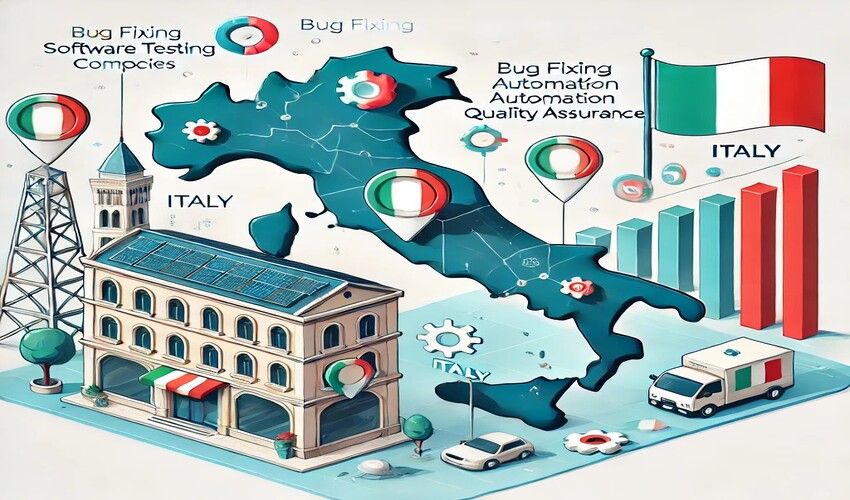In the dynamic landscape of digital transformation, effective integration is a linchpin for seamless connectivity and optimal performance. MuleSoft, a robust integration platform, has emerged as a key player, offering a versatile solution for connecting applications, data, and devices. To harness the full potential of MuleSoft, it’s essential to adhere to best practices and leverage valuable tips and tricks throughout the design, development, and management phases. As the best Salesforce MuleSoft integration services in India, MuleSoft empowers organizations to break down data silos, streamline application connectivity, and drive digital transformation. With its API-led approach, seamless Salesforce integration, and support for IoT and big data, MuleSoft enables businesses to accelerate innovation, enhance customer experiences, and achieve competitive advantage in the digital era. In this comprehensive guide, we’ll explore the essential MuleSoft best practices and tips for creating and maintaining integrations efficiently.
1. Strategic Planning and Design:
Before diving into development, meticulous planning and design are crucial. Identify integration goals, understand data flow, and design APIs thoughtfully. Leverage tools like RAML (RESTful API Modeling Language) to document and structure APIs.
2. Reuse Components:
Encourage reusability by creating and maintaining a centralized repository of common components. MuleSoft provides a rich library for this purpose, allowing teams to save time and effort by reusing connectors, templates, and other assets across projects.
3. Error Handling and Logging:
Implement robust error handling mechanisms to ensure graceful degradation in case of failures. Utilize MuleSoft’s logging capabilities effectively for detailed insights into integration processes, facilitating troubleshooting and performance optimization.
4. Security Measures:
Security is paramount in integration. Employ best practices for securing APIs, including the use of OAuth for authorization, HTTPS for secure communication, and encryption for sensitive data. Regularly update security configurations to stay ahead of potential threats.
5. Performance Monitoring:
Set up comprehensive monitoring and alerting to track the health and performance of your integrations. Utilize MuleSoft’s monitoring tools to gain real-time insights into system behavior, allowing for proactive issue resolution.
6. Thorough Testing:
Prioritize testing throughout the development lifecycle. Adopt unit testing, integration testing, and system testing methodologies to ensure the reliability and functionality of your integrations. Automated testing can significantly enhance the efficiency of this process.
7. Scalability Considerations:
Design your integrations with scalability in mind. Ensure that the architecture can handle increased loads and that resources are optimized. MuleSoft’s CloudHub, for example, allows for seamless scaling in response to varying workloads.
8. Documentation Practices:
Maintain detailed and up-to-date documentation for your integrations. This includes API specifications, data models, and integration flows. Clear documentation facilitates collaboration among team members and ensures knowledge transfer.
9. Continuous Integration and Deployment (CI/CD):
Implement CI/CD pipelines to automate the deployment process. This not only speeds up the release cycle but also reduces the risk of errors. Containerization tools like Docker can be integrated into CI/CD workflows for consistency across environments.
10. Version Control:
Leverage version control systems to manage changes to your integrations. This allows for easy rollbacks, collaboration among team members, and the ability to track modifications over time.
Organizations seeking expert guidance often turn to Salesforce consultants. These professionals, well-versed in both Salesforce and MuleSoft, can provide tailored solutions for integration challenges.
For comprehensive implementation, businesses can explore partnerships with the best Salesforce implementation companies in India. These companies bring extensive experience in deploying Salesforce solutions and integrating them seamlessly with other enterprise systems using MuleSoft.
In conclusion, mastering MuleSoft best practices and tips is instrumental in navigating the intricacies of integration. By adhering to these principles and leveraging the expertise of Indian service providers, businesses can streamline their operations, enhance collaboration, and achieve a resilient and future-ready integration ecosystem.
Author Bio
Steve Watson is a seasoned professional in the dynamic realm of IT integration, specializing in Salesforce MuleSoft integration services. With an extensive background in crafting seamless digital ecosystems for businesses, Steve stands out as a leading expert in connecting Salesforce with diverse applications, databases, and systems.
In the ever-evolving landscape of IT, Steve Watson remains dedicated to helping businesses achieve optimal connectivity and unlock the full potential of their digital infrastructure. With a focus on providing the best Salesforce MuleSoft integration services in India, Steve is a go-to resource for organizations seeking seamless and efficient integration solutions.

















Leave a Reply